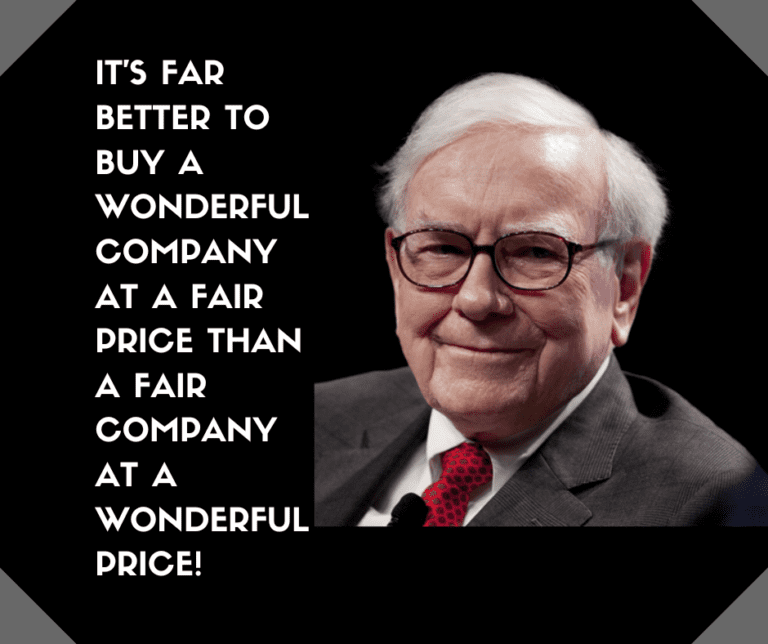What is Value Investing?
Value investing is a globally recognized, time-tested, and proven investment framework that has been popular for the past 100 years. This strategy involves identifying companies with robust financials and consistent earnings, which are trading at a lower price than their intrinsic value.
The most well-known advocate of this approach is Warren Buffett, who has amassed an enormous fortune using value investing principles. Benjamin Graham, Buffett’s mentor, is widely acknowledged as the father of value investing. By concentrating on a company’s fundamentals and acquiring undervalued stocks, value investors have the potential to generate substantial long-term returns.
So what are the benefits of Value Investing?
1. Saves Time: Value investing can save time as it involves researching and analyzing a company’s financial statements, business model, and competitive landscape. Once an investor has identified an undervalued stock, they can hold onto it for a long time, reducing the need for constant monitoring and frequent trading.
2. Able to Make Money: By purchasing undervalued stocks, investors capitalize on the potential for high returns when the market eventually acknowledges the health of the underlying business. When a company performs well, its stock price will ultimately rise to reflect its true value, rewarding patient investors with substantial profits.
3. Invest Within Your Comfort Zone: As value investing requires one to focus on the health of the company than on the stock price. Investors only need to have a good understanding on industries or companies they understand well, which can reduce the need to invest outside in unfamiliar or risky areas. This approach can lead to a more comfortable and confident investment experience.
ViA has summarized this investing methodology into the acronym: S.E.G.A, which stands for:
A) S (Search) – Where to search for good money-making companies to invest in.
B) E (Evaluate) – How do we know if a company is good or bad?
C) G (Gauge) – How much is a company’s shares worth so that you can buy low and sell high?
D) A (Asset Portfolio) – How much you allocate a company’s shares into your portfolio is critical.
Search
There are many ways to search for undervalued companies including those that have encountered some trouble, such as a decline in share price due to a temporary corporate scandal, economic or political event, or during a recession. However, it is not advisable to blindly jump in and invest in a company without doing proper research and analysis.
Some companies come under the limelight for the wrong reasons, an example is the case of the Boeing Company.
In 2019, two crashes involving Boeing’s 737 Max planes caused the company’s stock price to drop by over 20%. This created an opportunity for value investors to invest in a good company at a discounted price, as the stock price decline was considered temporary.
Evaluate
There are two main approaches to evaluating a company: quantitative & qualitative.
The quantitative approach in value investing involves analyzing a company’s financial metrics, ratios, and other quantitative data to determine its intrinsic value and potential for long-term growth.
It typically involves a rigorous analysis of a company’s financial statements, including its balance sheet, income statement, and cash flow statement, as well as its historical financial performance. Value investors use various financial ratios, such as price-to-earnings (P/E) ratio, price-to-book (P/B) ratio, and dividend yield, to determine whether a company’s stock is undervalued compared to its intrinsic value.
The qualitative approach focuses on a company’s non-financial factors, such as its competitive advantages, management quality, brand reputation, and industry trends, to determine its intrinsic value and potential for long-term growth.
This approach considers that a company’s future prospects are influenced by factors beyond just its financial statements. The goal is to identify companies with strong competitive positions and management teams, which can help the company maintain its competitive advantages and grow over the long term.
However, not everyone has a thorough knowledge of every industry, and that includes Warren Buffett, who used to avoid investing in the technology sector.
Warren Buffett recommends that investors should only stick to their Circle of Competence. This basically means to stick to investing in companies they understand and avoid investing in companies they don’t.
Famous quotes from the billionaire himself:
“Invest in what you know. If you understand a business, it’s very hard for someone to take that away from you.”
“Stick within the circle of competence. The size of that circle is not very important; knowing its boundaries, however, is vital.”
Gauge
One of the hallmarks of value investing is to buy a good company at a cheap price.
But how does one determine if the share price is undervalued or cheap?
From the diagram above, value investors will determine if a company is undervalued by finding out the intrinsic value (true worth) of the company based on their financial statements.
- If a company’s current share price is lower than its intrinsic value, it is considered undervalued and presents an opportunity for value investors to buy shares after conducting thorough research and analysis
- Conversely, if a company’s share price is higher than its intrinsic value, it is considered overvalued or expensive, and value investors may consider selling their shares if they believe the company is no longer a good long-term investment.

There are several ways to determine the intrinsic value of a company. And one of the simplest methods is to identify the Price-to-Book (P/B) Ratio: The P/B ratio is calculated by dividing a company’s current market price per share by its book value per share.
A low P/B ratio may indicate that a company’s stock is undervalued compared to its book value, meaning that the market price per share is lower than the book value per share.
Check out at what P/B ratio should you invest in Warren Buffett’s Berkshire Hathaway stock?
Asset Portfolio
One of the most critical factors to building a passive income-generating portfolio is asset allocation.
Doing this properly requires time to consider your financial goals and risk tolerance.
So how should you allocate your portfolio if you have $10,000 to invest? Click here to find out.
How to start investing?
In order to build a portfolio that will generate passive income, the first step is to get the right knowledge to reduce your risks of losses. Value Investing may seem to require tremendous time and effort to search for a good company to invest in. Furthermore, only a few institutions in the world provide a program on value investing and a majority are from the States. Fortunately, you do not have to fly overseas to learn them and may simply register for an upcoming value investing masterclass to:
– Learn how to generate 3 sources of passive income
– Learn how to invest with minimal capital and time
– Learn how to generate cash flow every month to replace your existing salary.
Claim your Value Investing Masterclass seat now!
Summary
Value investing is an investment strategy that involves selecting stocks that are undervalued by the market. Value investors seek out companies with strong fundamentals, such as a solid balance sheet, a history of earnings growth, and a sustainable competitive advantage, that are currently trading at a discount to their intrinsic value. Over time, the market will recognize the true value of these companies and the stock price will increase, resulting in a profitable investment.
Disclaimer
The above article is for educational purposes only. Under no circumstances does any information provided in the article represent a recommendation to buy, sell or hold any stocks/asset. In no event shall ViA or any Author be liable to any viewers, guests or third party for any damages of any kind arising out of the use of any content shared here including, without limitation, use of such content outside of its intended purpose of investor education, and any investment losses, lost profits, lost opportunity, special, incidental, indirect, consequential or punitive damages resulting from such unintended use.










